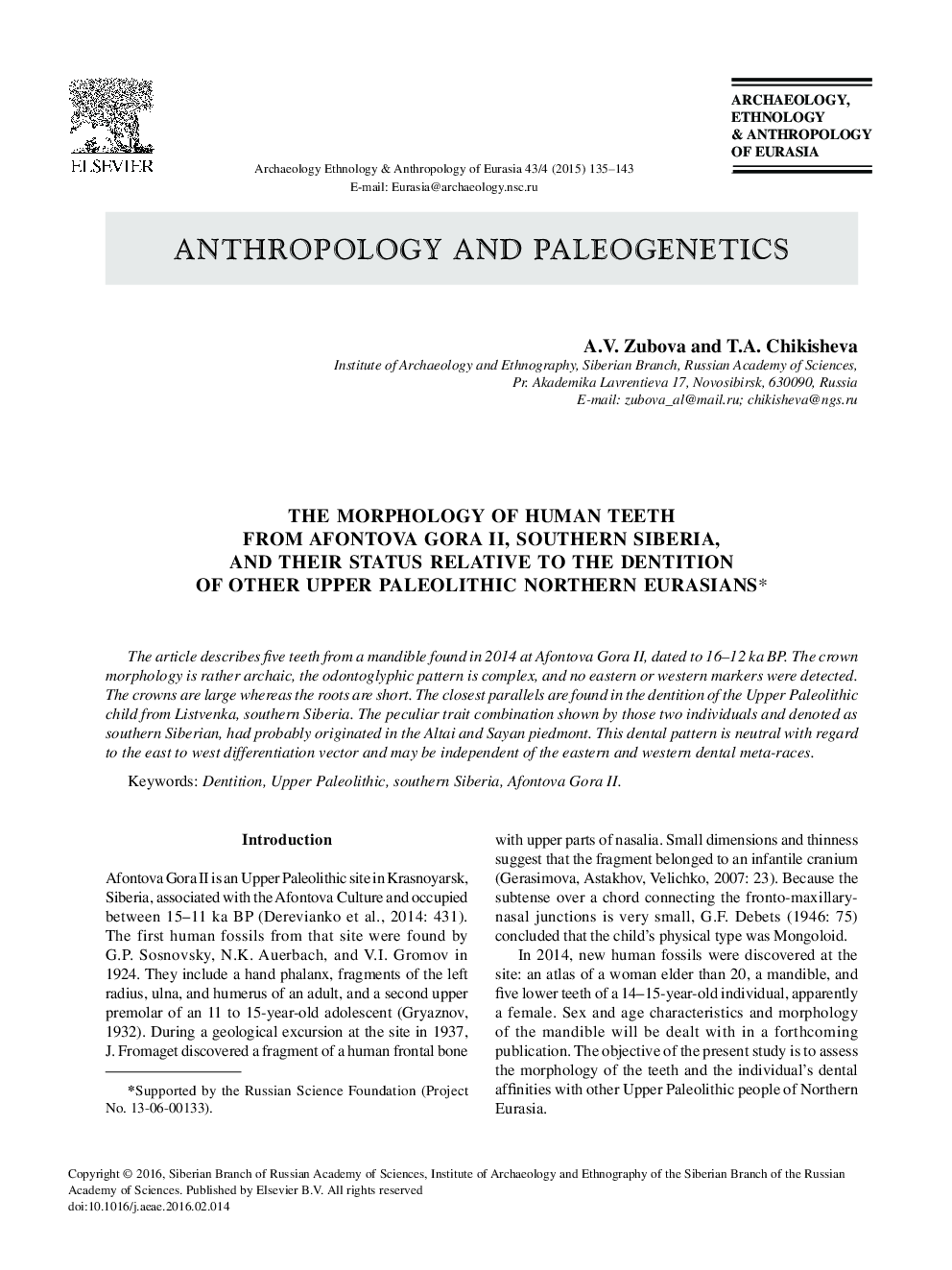| Article ID | Journal | Published Year | Pages | File Type |
|---|---|---|---|---|
| 1034189 | Archaeology, Ethnology and Anthropology of Eurasia | 2015 | 9 Pages |
Abstract
The article describes ï¬ve teeth from a mandible found in 2014 at Afontova Gora II, dated to 16-12 ka BP. The crown morphology is rather archaic, the odontoglyphic pattern is complex, and no eastern or western markers were detected. The crowns are large whereas the roots are short. The closest parallels are found in the dentition of the Upper Paleolithic child from Listvenka, southern Siberia. The peculiar trait combination shown by those two individuals and denoted as southern Siberian, had probably originated in the Altai and Sayan piedmont. This dental pattern is neutral with regard to the east to west differentiation vector and may be independent of the eastern and western dental meta-races.
Related Topics
Social Sciences and Humanities
Arts and Humanities
History
Authors
A.V. Zubova, T.A. Chikisheva,
